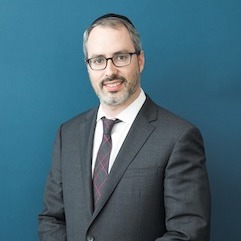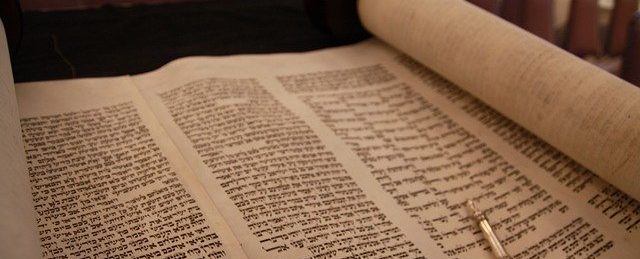It is common practice in many communities worldwide to have a second reading of Parshas Zachor in the afternoon for women who weren’t able to make it to shul for various reasons. I’d like to take a closer look at the background of Parshas Zachor and this practice in particular.
Origin
There is a Biblical commandment to remember (mentally and verbally) what Amalek did to Klal Yisrael upon leaving Egypt. This is done by reading “Parshas Zachor”, the portion of the Torah from Parshas Ki Setzei (Devarim 25:17) where the Torah recounts briefly what Amalek did and admonishes us to remember and not forget this episode. The Torah finishes by commanding us to wipe out any vestige of Amalek.
What was the great wickedness of Amalek? When Israel left Egypt they were the first antagonists to wage war with the fledgling nation, and they broke the ice for all future conflicts. The well known Midrash compares the Nation of Israel to a hot tub that was too hot for everyone to approach. Finally one fellow jumped in and cooled it down and everyone else followed suit.
The Chinuch (603) explains that no time frame is given for this Mitzvah, and can be fulfilled once a year or even every two or three years. The Minhag became to read Parshas Zachor the Shabbos before Purim because Haman was an Amaleki. (See Shu”t Chasam Sofer EH 119 for a in depth discussion of how often Parshas Zachor has to be read to be considered ”remembered”).
Sefer Torah
As we mentioned, we must verbally recall Amalek’s evil actions. How is this fulfilled on a Biblical level?
The Gemara (Megilla 18) states that the remembering must be done with a “Sefer”. Tosfos (Ibid 17b see also Tosfos in Berachos 13a) says that the only Biblically commanded reading of the Torah is Parshas Zachor.
The Emek Beracha and the Netziv both understand from the Rambam that the reading of Parshas Zachor from a Sefer Torah is Rabbinic in nature. The Minchas Chinuch also writes that a Sefer Torah and a minyan are only Rabbinically mandated.
So we seem to have a dispute among the Rishonim as to whether or not reading Parshas Zachor is a Biblical commandment or a Rabbinic ordinance to ensure that we would fulfill the Mitzvah of remembering Amalek.
Minyan
The Rosh (Berachos 7:20) says that since it is Biblically commanded it therefore requires a quorum of ten men. (The Terumas Hadeshen quoted by the Magen Avraham writes the quorum is Biblically mandated, Shaar Hatzion 685:5 argues with this contention).
Alternative Readings
The Magen Avraham (685:1) writes that one fulfills his requirement with the reading of Purim morning which is taken from Parshas Beshalach and recounts the war with Amalek.
Both the Mishna Berura and the Aruch Hashulchan take issue with this because part of the Mitzvah to remember is also to wage war and take revenge against Amalek which is delineated in Parshas Zachor specifically. [One would however fulfill their obligation with the reading of Parshas Ki Seitzei which includes Parshas Zachor].
Are Women Obligated?
The Chinuch (Ibid) writes that the Mitzvah to remember Amalek is only applicable to men because they are the ones who are commanded to fight Amalek. The Minchas Chinuch questions this on several counts and says that women are biblically commanded to remember Amalek.
The Binyan Tzion (2:8) also questions the Chinuch and relates that Rav Nosson Adler was very stringent in ensuring that everyone in his household, both men and women, would go to Shul and hear Parshas Zachor. (See also Avnei Nezer 509).
Rav Moshe Shternbuch (Moadim Uzmanim 2:168) and others note that from the omission of the Poskim it would seem that Parshas Zachor is no different than any other Krias HaTorah in as much as women are not obligated. The Chazon Ish and the Toras Chesed both held that women are not obligated in Parshas Zachor with the tzibur, and could fulfill their obligation by reading and recounting the story on their own.
So it would seem the following points are clear:
• The requirement of a Sefer Torah is disputable
• There may be a requirement to have a Minyan
• It would seem that most Poskim would not obligate women in hearing Parshas Zachor
Based on the above, Rav Moshe Feinstein was very opposed to making a special reading of Parshas Zachor for women only. He felt that whereas the Halacha requires one to have a compelling reason to remove the Sefer Torah from the Aron Kodesh, and unnecessarily removing the Sefer Torah from the Ark and read from it would constitute a bizayon or a “shaming” of the Torah. In our scenario, he felt there is no compelling reason since one can fulfill their obligation of remembering Amalek through reading Parshas Zachor from a Chumash according to most authorities. (Moadei Yeshurun).


Rabbi Haber,
I believe in this post you have ignored the nature of Halacha. Halacha must adapt, it must flow with the change of time. This was the position of the great Gadol the Sridei Eish, R. Yechiel Yaakov Weinberg. Specifically in regard to women’s issues the Sridei Eish looked to include women in Jewish practices, as evidenced in his famous Teshuvos on Kol Isha and Bat Mitzvas. We too must follow in his footsteps and attempt to include women as much as possible. We must adopt R. Nosson Adlers’s position as the final Halacha.
Thank you for this article, it was enlightening. I truly enjoy the topics discussed on this site.
As a woman, I would have to ask: why do we seem to discourage women from Mitzvos which they have accepted upon themselves to observe? A problem which arose in Europe was the apathy shown by the women towards the Halacha. I see today a similar stance forming.
I refer you to the memoirs of Gluckel of Hameln who lived in Hamburg in the 17th century. She writes that a servant had to fetch her from the synagogue where she was praying. She added to her obligations toward G-d and did not attempt to reduce them.
i find it puzzling that you should write that rav moshe was against making a kriyah for women because in the yeshivas community we do
elisha i will call myself shalom for your sake but you are definitly an apikores of some form and do not compare yourself to our gedolim this is a further attempt on your part to degrade them any shita they said while others felt it was kfirah they felt it was grounded in tradition you on the other hand are saying that halacha changes i belive that is the shita of other groups that distort our religion
Islander
Is it possible that in the yeshivas community they use a private Sefer Torah? There would be less reason to object to the Minhag in such a case.
Excellent. Most shuls in the communities I’ve lived in do have an additional keriah for women, though- one assumes they do this al pi horoas chacham. In any case, it’s important that it be done with full awareness of the issue.
A significance of the Amalek issue is Zachor, the remembrance of what Amalek does. When we focus on whether or not a woman is required to hear Zachor we are “not seeing the forest for the trees”. We loose focus. Sufek, the Rabbinic word for doubt, and Amalek have the same gematria. The work of Amalek is to create confusion and doubt, a gap in human consciousness. The work of the Jew is remember and to close that gap and live to manifest the fact that G-d is in the world.